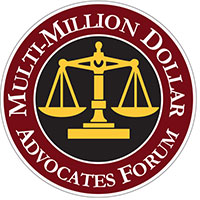When a teenager starts driving, it’s as much a rite of passage for parents as it is for the new driver. It’s a bittersweet moment as teens take a step toward independence. It’s freedom from what many parents describe as “taxi duty.” It’s a time for pride and encouragement, as kids move closer to adulthood. Mostly, though, it’s scary.
Teen Driver Accident Statistics
It’s natural for parents to worry, especially as children stray further and become more autonomous. Unfortunately, concerns about teenage drivers have their roots in facts, not just instinct.
In 2015, 99,000 teenage drivers were injured in automobile accidents, and more than 2,300 teens were killed on the road. While much of the risk is attributable to inexperience, there are many steps parents can take to help keep their teenage drivers as safe as possible.
Safety Tips for Parents of New California Drivers
Every state now has graduated driver’s licensing regulations, and the first and most important step parents can take to keep teens safe is to ensure that they play by the rules. Though teenagers may be impatient to get on the road and it may seem silly to limit the passengers in the vehicle or the hours during which a teen can drive, there are data-based reasons for each of those regulations.
Understanding the risks that all drivers face on the road and how these risks are magnified by inexperience can help parents protect young drivers—and help young drivers protect themselves.
Teens and Distracted Driving in Los Angeles County
Texting and driving is illegal regardless of age and experience, but the risk is even greater for a young driver than an adult. Looking away from the road for just a few seconds is dangerous, but it’s even more dangerous in a driver who lacks the experience to adapt quickly and avoid an accident. Still, in an extensive study conducted by AAA Foundation for Traffic Safety, newly-licensed drivers were revealed to have looked away from the road at least briefly in 45% of situations involving events such as sudden braking or an abrupt turn. Data from the same organization reveals that more than 1/3 of teen drivers admit to texting and driving, though 94% say they are aware of the dangers.
Distractions are even more significant when there are other teenagers in the car. Loud conversations and horseplay were recorded in a significant percentage of similar events involving drivers with other teens in the car.
Make sure that your teen fully understands the risks associated with distracted driving, and that keeping his or her attention on the road isn’t just a “rule,” but can be a matter of life and death. And, consider setting limitations on riding with or driving groups of teens in the early days so that your new driver can gain experience and confidence without distraction.
Dangers of Drowsy Driving in L.A.
The dangers of driving without adequate rest come as a surprise to most people. As a society, we’re short on sleep much of the time, and most of us probably don’t stop to consider how much rest we got the night before when determining whether we’re safe to drive.
However, data reveals that fatigued driving can be just as dangerous as driving while impaired by drugs or alcohol. In fact, a driver who has slept less than four hours in the past 24 is more than eight times as likely to cause an accident as one who has rested for more than six hours. Your teen is very unlikely to self-determine that he or she is too tired to drive safely, so it’s up to you as a parent to ensure that your kids are well-rested, and to make the judgment call as to whether they are in a condition to be safely operating a motor vehicle.
Remember, when making that decision, that inexperienced teens are less able to make quick adjustments, assess dangers on the road, and have a clear sense of their own impairment than seasoned drivers.
California DUI Statistics and Laws
Of course, everyone knows that driving under the influence of drugs or alcohol is dangerous. Still, the U.S. Bureau of Transportation Statistics reports that about four million U.S. drivers operate motor vehicles under the influence each year, resulting in well over 100 million drunk driving incidents.
Statistics provided by the California court system reveal that at every blood alcohol concentration (BAC), teen drivers are at a greater crash risk than older, more experienced drivers. And, according to the Centers for Disease Control and Prevention (CDC), drivers aged 16-20 are 17 times as likely to die in an automobile accident when they have BACs of .08% or greater.
Although the law attempts to adjust for this discrepancy—it’s a crime for a driver under the age of 21 to operate a vehicle with a BAC of even .01%–teens driving under the influence remains a serious problem. About one in 10 U.S. teens drives under the influence. In fact, although only about 6% of licensed drivers are teenagers, this group accounts for about 20% of alcohol-related crashes.
Seatbelt Safety in Los Angeles
While wearing a seatbelt may not impact your teen’s crash risk, it will make a significant difference in the risk of injury or death associated with a crash. Unfortunately, teenagers are the group least likely to use seatbelts. According to the U.S. Department of Transportation (DOT), more than half of teens killed in automobile accidents in 2013 were not wearing seatbelts. And, their choices seem to impact their peers and younger passengers, as well. When a teen driver wasn’t wearing a seatbelt, 90% of passengers aged 13-19 who were killed in crashes also weren’t restrained.
Seatbelt safety messaging begins long before your child begins to drive. Wear your own seatbelt every time you get in the car, even for short trips, and make sure that your kids and your other passengers do the same. Making this behavior automatic is your single best tool for ensuring that your kids wear seatbelts when you’re not in the car.
Los Angeles Personal Injury Attorneys and Resources for Teen Drivers
Whether your teen has just started driver’s education, has just received his or her driver’s license, or is not yet ready to drive, educating yourself is the first step toward educating your new or future driver. Driving in the teen years is dangerous, but millions of new drivers navigate this difficult transitional period successfully. Your job is to give your child all of the tools necessary to succeed, and to monitor his or her progress and step in when required.
Information and tools to help you help your teen cross this bridge are available at:
The Centers for Disease Control and Prevention
The National Highway Traffic Safety Administration
The Children’s Hospital of Philadelphia










